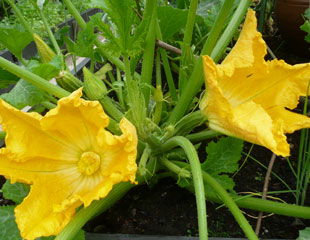By: AHDB Horticulture
Wild flower field margins protect soil health, boost water retention and increase farmland bird diversity and abundance. They are associated with high diversity and pollinators as well as reducing pollinator forage distance to crops and may improve pollination services.
Initiatives aimed at improving pollination by increasing wild flowers’ presence have been variable and in some cases a more simplistic landscape has been more beneficial. Wild flowers may “distract” pollinators from the focal crop, providing a disadvantage. Some pollinators are long-distance foragers, so closer proximity to crops is not an issue.
Jessica Knapp from the University of Exeter investigated how the presence of wild flower margins could benefit pollination services for courgettes by measuring pollination rates, pollinator abundance and pollinator diversity at nine sites in southern England. Her research showed that buff-tailed bumblebees were the most abundant pollinators of courgettes.
Bumblebees were found to be most abundant in fields with more wild flower presence. Wild flowers also supported other pollinators such as solitary bees, which while not key pollinators of courgettes are key pollinators of other crops.
There was no evidence that wild flowers “distract” pollinators from courgette flowers, and bumblebees appeared to show a preference for courgette flowers in the morning, when flowers are open, before switching to flowers on the field margin in the afternoon, when courgette flowers are closed.
The take-home message of the research is that preservation of field margins is an effective way of attracting pollinators into fields and that wild flowers aid conservation of important species.
For details on all AHDB Horticulture activity, see horticulture.ahdb.org.uk









